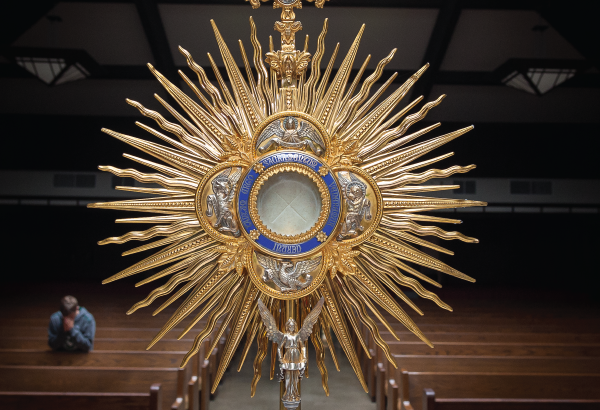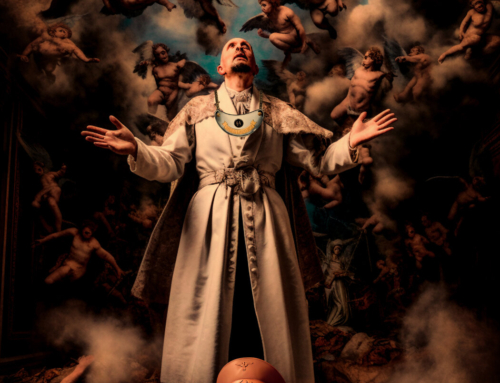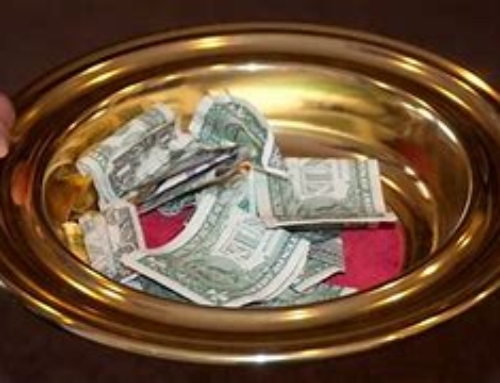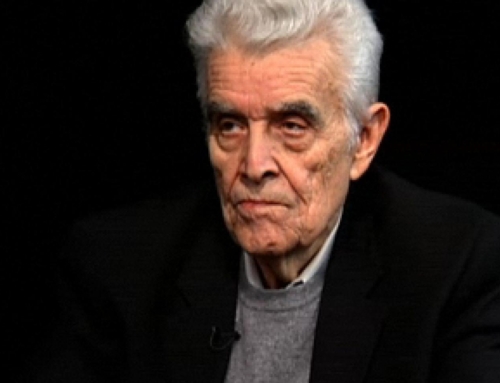I’m often surprised at the number of good, faithful Catholics who are well informed about their faith, who do not understand the doctrine of transubstantiation.
In my experience they fall into two categories. The first do not believe the Eucharist is anything more than a symbol. The second believe the bread and wine become the Body and Blood of Christ but they think the bread and wine are literally transformed into human flesh and blood.
Neither position is the teaching of the Catholic Church. We believe in transubstantiation. The substance of the bread and wine really are transformed into the Body, Blood Soul and Divinity of Our Lord Jesus Christ. However, the transformation is not physical in a literal way. If you took the consecrated host to a laboratory it would be chemically shown to be bread, not human flesh.
The Catechism of the Catholic Church teaches:
1375 It is by the conversion of the bread and wine into Christ’s body and blood that Christ becomes present in this sacrament.
1376 The Council of Trent summarizes the Catholic faith by declaring: “Because Christ our Redeemer said that it was truly his body that he was offering under the species of bread, it has always been the conviction of the Church of God, and this holy Council now declares again, that by the consecration of the bread and wine there takes place a change of the whole substance of the bread into the substance of the body of Christ our Lord and of the whole substance of the wine into the substance of his blood. This change the holy Catholic Church has fittingly and properly called transubstantiation.
It is therefore not possible for a Catholic to believe that the transaction at Mass is merely a symbolic memorial. But many people who believe in the Eucharistic transformation do not understand transubstantiation.
The word “transubstantiation” means “substance across” and to understand what this means we must first understand what the medieval philosophers like St Thomas Aquinas meant by the word “substance”. They meant by this word almost exactly the opposite of what we mean by it. When we say something is “substantial” we mean it is solid, real, physical and concrete. The medieval philosophers however, used the word “substance” to indicate the invisible and eternal quality of a thing. The physical aspect of a chair, for example, is temporary and mutable. It changes. Eventually, given enough time, the wood of the chair will break, rot and decay into dust. The “chair-ness” of the chair is the eternal, invisible part and this is what is referred to as the “substance.”
With bread and wine the “breadness” of the bread and the “wine-ness” of the wine is the substance and it is this “substance” which is transformed. The physical part of the bread and wine is called the “accident” and the accident of bread and wine remain although the substance of the bread and wine have become the Body and Blood of Christ.
We can think of it like this: I have in a room at my home pictures of myself at the age of two being held in my father’s arms. Then there is a picture of me as a high school student and one of me in my thirties and now in my fifties. Each one is totally different because the “accident” of my physical body has changed. However, there is a “substance” of Dwight that is the eternal part of me that has not changed. It is present in each of the pictures even though my body is very different.
So with the bread and wine at the Eucharist, it is the invisible, eternal “substance” which becomes the Body and Blood of Christ while the “accident” of bread and wine still exist.
However, this philosophical explanation, like all philosophical explanations can only take us so far. In fact, the invisible part of a thing and and the physical part cannot necessarily be separated in this way. The invisible part of me and the physical part seen in the photographs is a unity. The objection to this explanation of transubstantiation that I have just given is that it sounds like the Lord is only “spiritually present” in the Eucharist. If the physical aspect is not transformed in some way, then some Catholics argue, the transformation is just an ethereal or spiritual presence sort of floating about and around the bread and wine. This is to misunderstand the fact that the invisible substance is the most real part of the bread and wine, not the least real. Not only is it the most real, but it is not separate from the physical aspect, nor can it exist separately from the physical aspect. Therefore, inasmuch as the substance is changed there is also some sort of change in the physical aspect.
Furthermore, there is a physicality to the Lord. He is not just a spirit floating around in the air. We say the Eucharist is his body, and that implies some kind of physicality. Therefore we must go a bit further than the medieval philosophical explanation and posit that the real presence of the Lord’s Body Blood Soul and Divinity in the sacrament is also, in some way, physical. We could say the inner quality of the physical Christ is present, but not extended in space. In other words, the reality of Christ’s presence is not just spiritual in an ethereal sense. Through the transubstantiation Christ is also present physically within the substance.
This does not mean that the bread and wine become human flesh and blood, and it is this misapprehension that we need to be careful to correct.
The exception to this would be the unusual examples of Eucharistic miracles, where the Lord, for the encouragement of our faith, allows at certain times for the bread and wine to be transformed not only in their substance but also in their accident.
Finally, transubstantiation is a philosophical explanation for what we believe happens in the mystery of the sacrament of the altar. What happens on the altar is far greater than a philosophical definition just as what happens in a marriage is far greater than a psychological definition of “love”. Instead of trying to explain the mystery of “love” we simply say to the beloved, “I love you.” Likewise, although we attempt to understand and explain the mystery of the Eucharist it is best to hear the Lord say, “This is my Body” and to hear the priest say as we receive the Lord, “The Body of Christ.”







Leave A Comment
You must be logged in to post a comment.